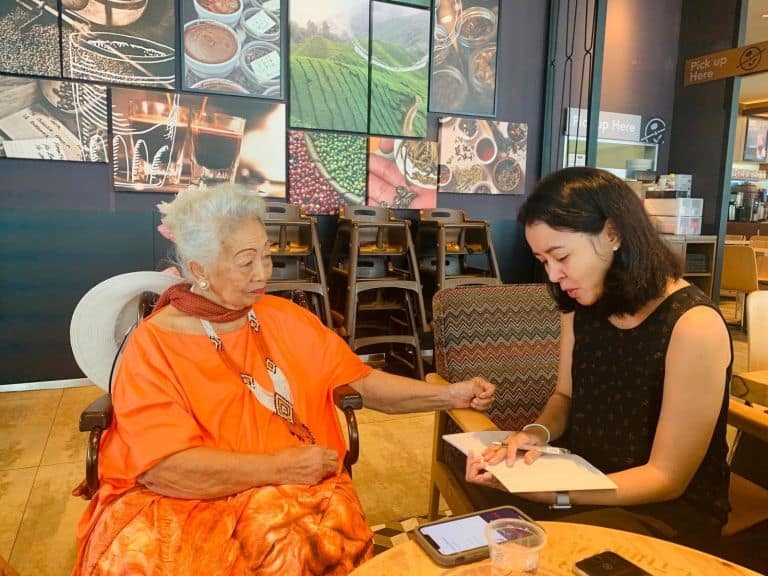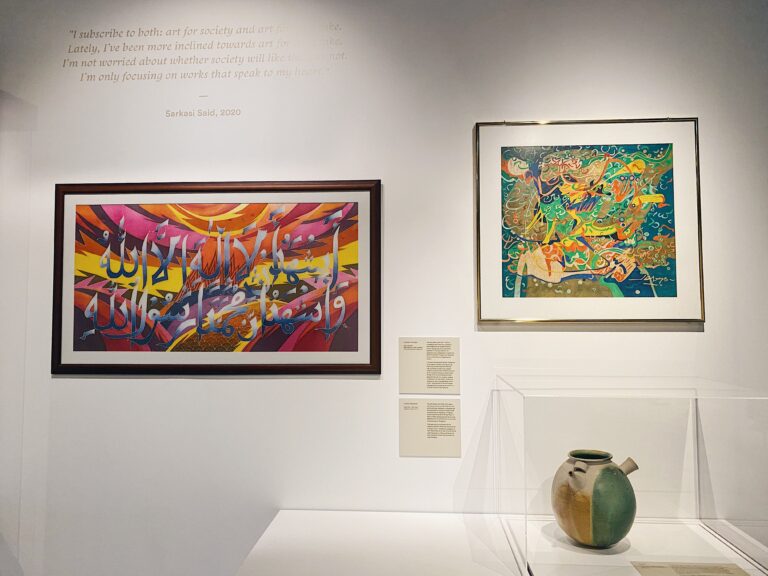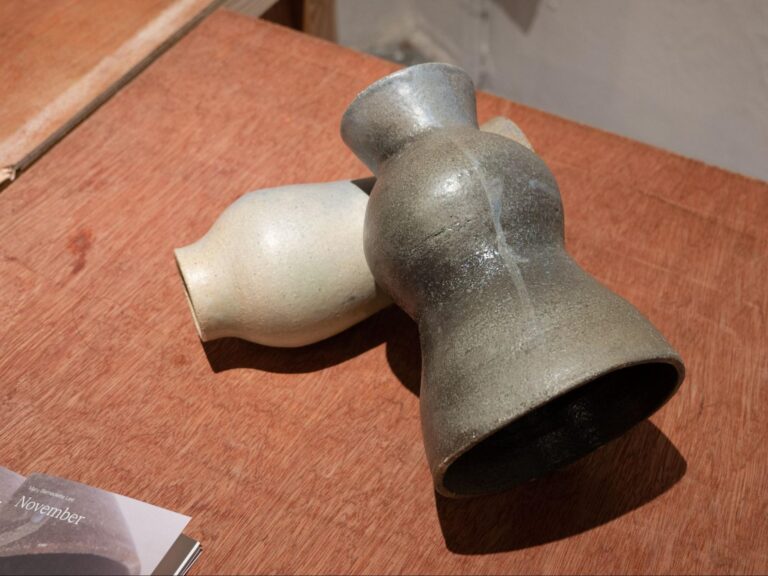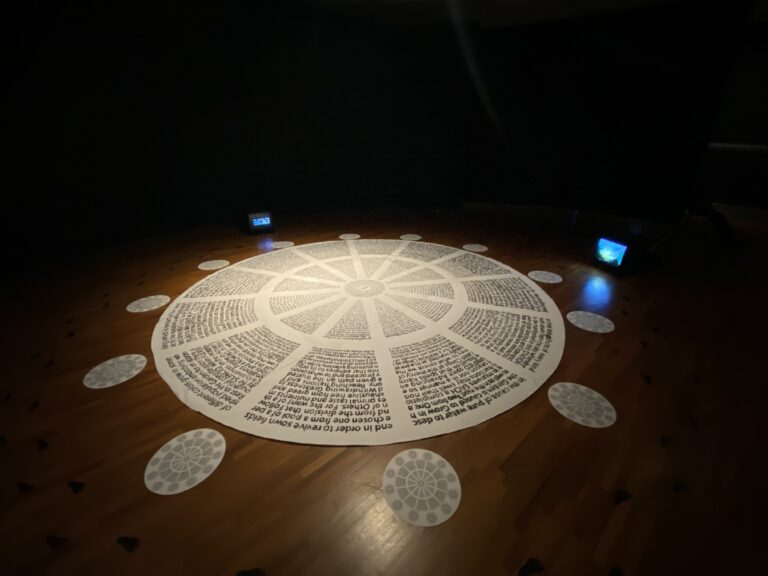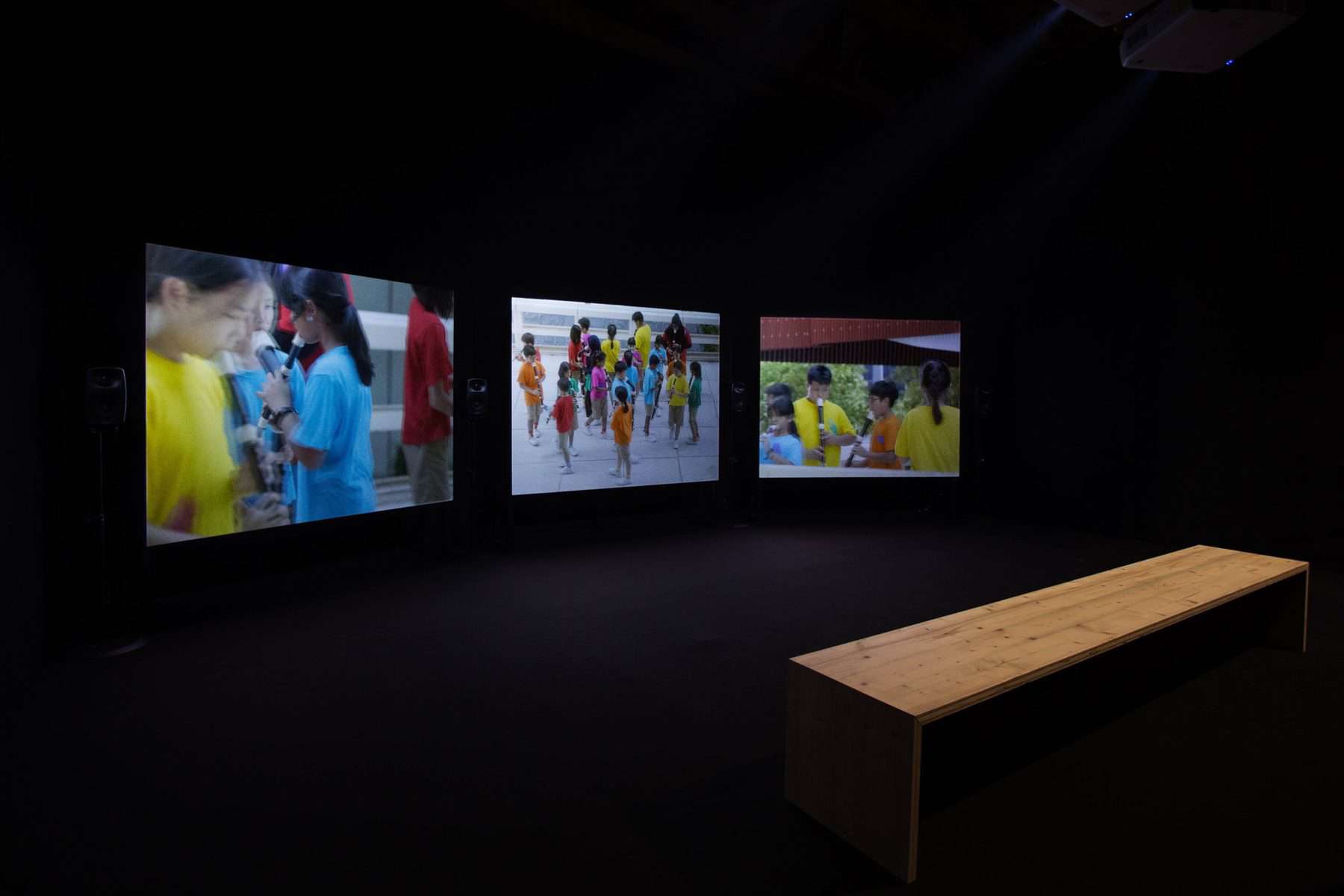
Walking into the exhibition room located on the basement level of the National Museum of Singapore, I was brought back to the familiar sounds of Recorder Rewrite, a three-channel film installation by Ang Song-Ming that explores improvisation and experimentation with the recorder.
Despite the melody’s playful unpredictability, I was already well familiar with the ups-and-downs of the music and its unconventional use of the common instrument, after spending nearly two months listening to the artwork on a daily basis last year. Working as an Ambassador for the Singapore Pavilion at the 58th Venice Biennale, where Music for Everyone: Variations on a Theme, curated by Michelle Ho and featuring the artworks by Ang Song-Ming, was first presented, granted me the unusual privilege of spending prolonged periods listening, looking and even touching (ever-so-gently and only for the purposes of maintenance and cleaning, of course), Ang’s works.
Now, more than a year after my time in Venice, I find myself re-encountering Music for Everyone under a new light.
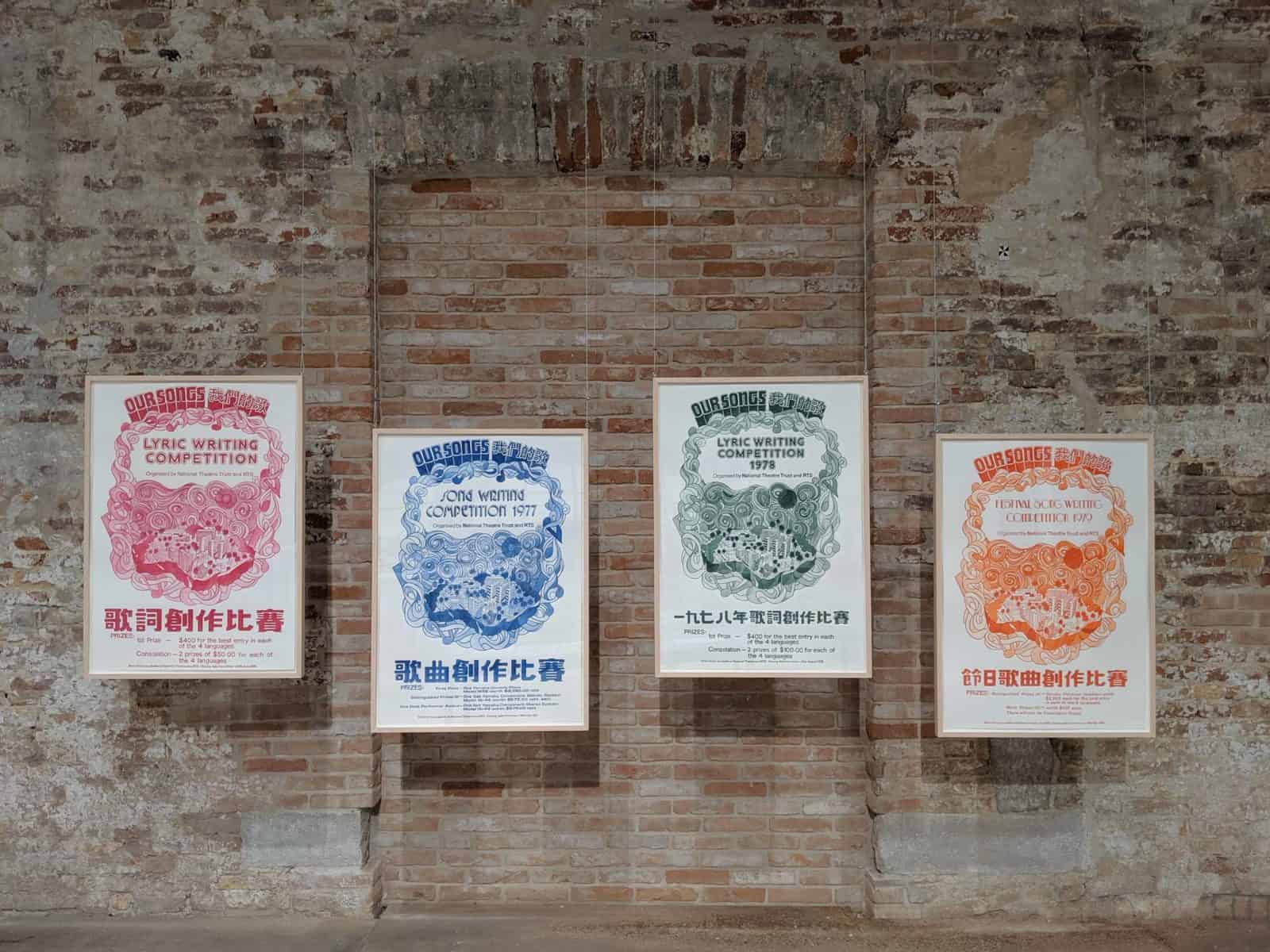
Music for Everyone references a series of music concerts that took place in the 1970s to 1980s under the same name, organised by the then- Ministry of Culture with the aim of promoting Western classical music and fostering a sense of national identity in Singapore through the arts. The exhibition – both at Venice and now in Singapore – presents archival and research materials that Ang uncovered around this campaign, as well as artworks he created in response to this state directive.
Simultaneously, Music for Everyone is also a principle that lies at the core of Ang’s approach to art-making, one which centres around notions of interactability and accessibility. Ang’s work breaks down the barriers between high art and the public, using processes that recognise his audiences and participants as collaborators and co-creators rather than passive receivers.
The Ambassador position at the Venice Biennale is one that involves being a gallery invigilator and on-site liaison amongst the National Arts Council, the artist and curator, and the local Biennale management. I had decided to apply for the role for many reasons, but mostly because of how much Ang’s practice resonated with my own beliefs about art.
The recorder, a common instrument that many of us learned to play in school and enjoyed to varying degrees, is the protagonist of this exhibition.
Ang picks up the recorder, takes it apart to build new sculptural objects, cuts up and draws across the music sheets we might have read from to play the instrument, and reinvents the very ways in which one can generate sounds and melodies using the recorder.
I remember being puzzled at first, not fully understanding why the artist had chosen to spotlight such a seemingly modest device until the many conversations I had with friendly visitors led me to understand the power involved in harnessing an instrument that many of us already had memories with and experiences of. In giving us a glimpse into the infinite possibilities through which we may play with the recorder, Ang is able to challenge how we have been taught to approach music-making. His approach manages to utilise one of the most basic musical instruments, while also emphasizing the value of experimentation and spontaneity.
At the National Museum, the recorder remains as the exhibition’s highlight. Recorder Sculptures, a series that rearranges the three sections of the instrument into unlikely sculptural shapes, however, is no longer laid on the top of an open table as it was at the Sale d’Armi in Venice.
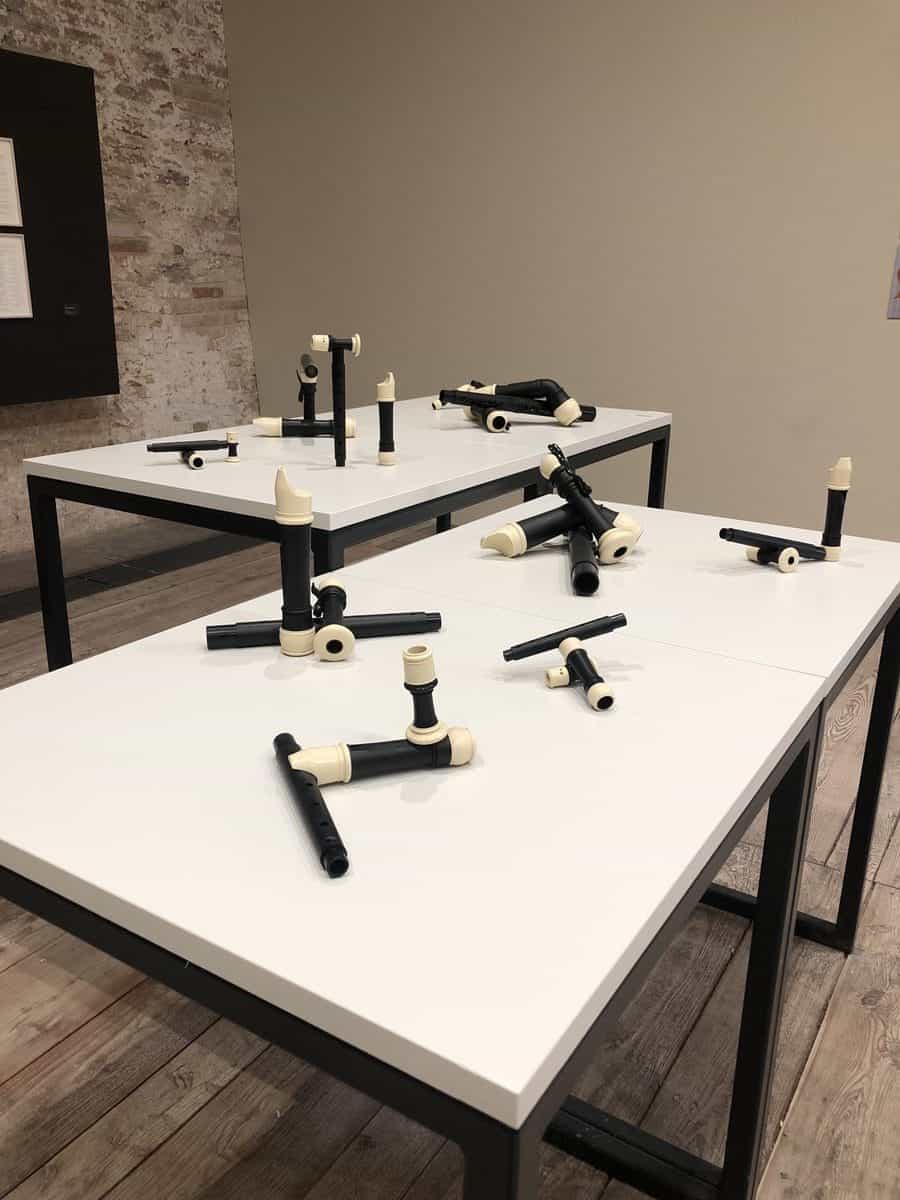
Instead, the individual objects are now displayed in colourfully lit boxes across a wall.
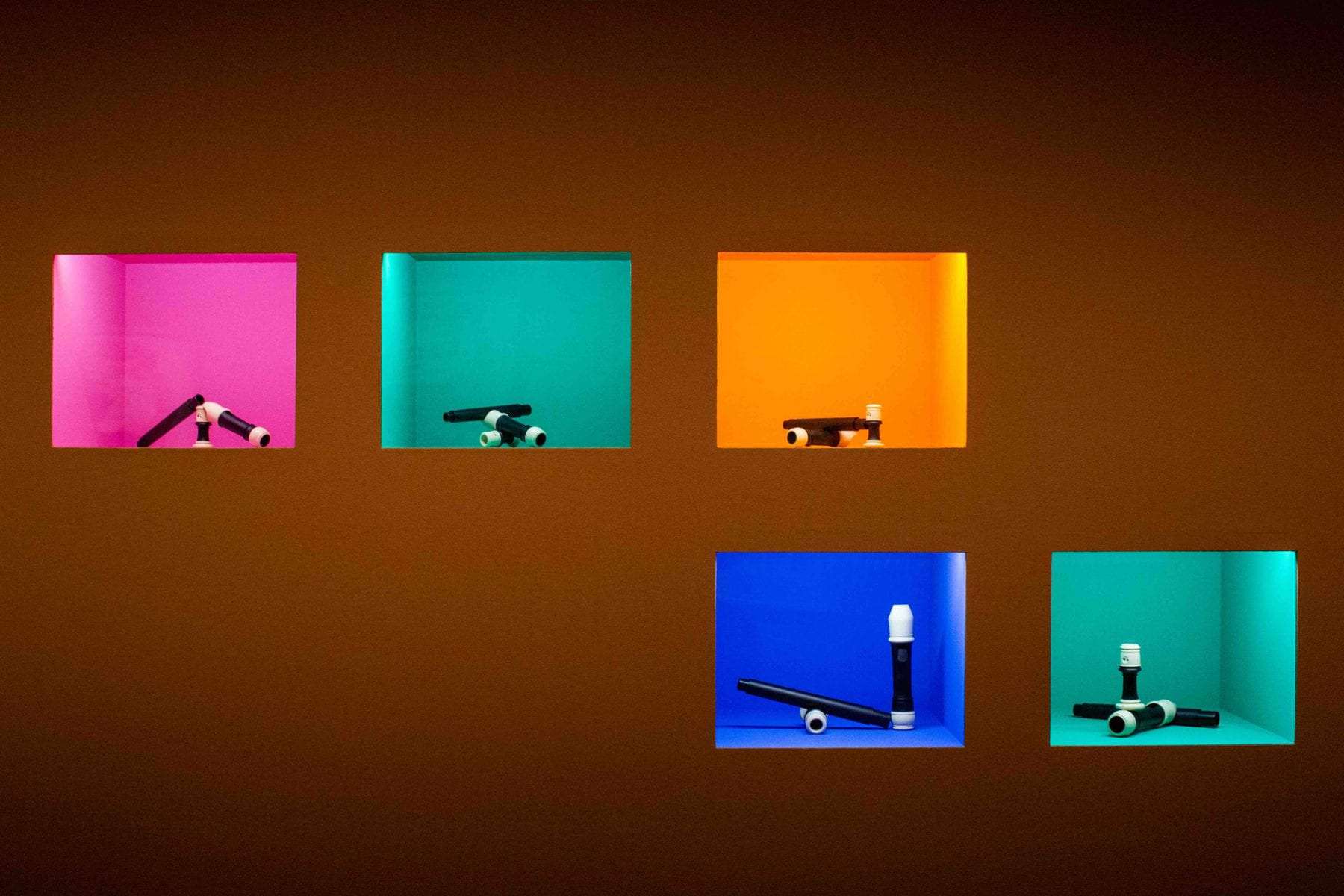
The change in its mode of display elevates the Recorder Sculptures, bringing it up to eye-level and emphasising its qualities as an ‘artwork’. At the same time, the new display renders the objects less approachable than before, as they sit pristinely beyond reach in their carefully designated spaces. Nonetheless, the playful spirit of Music for Everyone remains present, with sounds echoing through all corners of the room.
Expanded beyond the Venice Biennale presentation, the National Museum show includes works by Ang that I had not yet met in person previously. You and I is the artist’s long-time project that invites friends and strangers alike to write letters to him, to which, he responds with a personalised mix-tape instead of written words on paper. The exhibition presents the letters in framed canvases, allowing us a glimpse of the correspondence that took place between the artist and his music’s inspiration, placed across the top of a piano, a coffee table, a bookshelf, and more. The names of the songs included in the playlist are spelled out on a piece of paper, near an audio port that allows visitors to plug their own listening devices in and tune into the musical conversation.
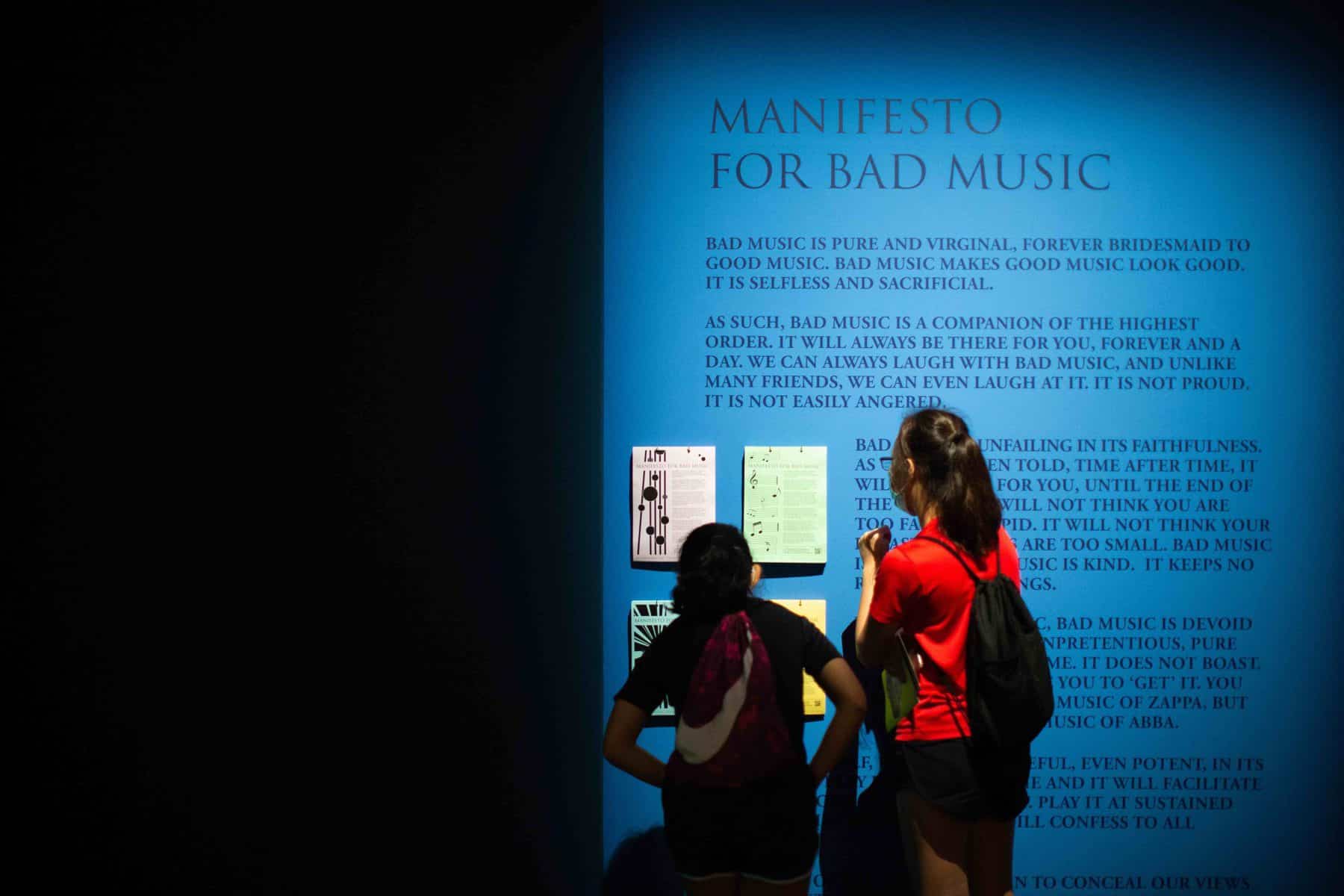
Another addition to the exhibition is Manifesto for Bad Music, a project that had previously been presented at the 3rd Singapore Biennale in 2011. A tribute to all types of music forms, but especially those that are considered lowbrow for being too mainstream, the project is a response to the snobbery and gatekeeping that often takes place in arts spaces. Declaring and defending the potency and versatility of ‘bad’ music, the project playfully invites all lovers of such tunes to “unite” by contributing to the Bad Music for Everyone Spotify playlist. Giving space to many of the classic tunes we hate to love and love to hate, from Friday by Rebecca Black to Barbie Girl by Aqua, the project cheekily pokes fun at those of us who take too much pride in our carefully curated contemporary soul, nu-jazz and avant-pop playlists, while we heap scorn upon top 100s hits (which are probably enjoyed nonetheless as guilty pleasures).
Reuniting with this exhibition, I cannot help but be reminded of how, Alberto, a Venetian colleague of ours who worked at the Luxembourg pavilion on the same floor as Singapore’s presentation, had once remarked the sounds of Recorder Rewrite to be almost cacophonous.
After a year away from the work, I think I may now agree with Alberto. Unexpected, rule-bending, and audaciously discordant, Ang’s artworks never intended to fit within the strict confines of classical music.
Music for Everyone is not only a declaration that music should be made for and enjoyed by everyone accessibly, but is also an invitation for us to think beyond the restrictive parameters we have set out for ourselves, and to seek out and embrace the imaginative possibilities that could lie ahead of us, in music and beyond.
_______________________________________________
If you’d like to view this submission for the Venice Biennale 2019 back on home ground in Singapore, visit the National Museum. The show is on till 8 November 2020.






